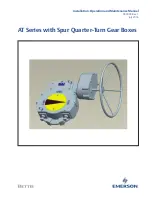
Number of Tests
Specify the number of tests to be performed (up to four).
Initial Trip
3-Phase
mode is the only option available.
Test-1 Delay, Test-2 Delay, Test-3 Delay, Test-4 Delay
Specify the open time (in seconds) between each test. (Minimum: 0.18 for Time-1, 1.80
for Time-2, 10.00 for Time-3, 30.00 for Time-4; Maximum: 655.00; Increment: 0.01)
SEF Sequence
Close-testing is the only option available.
SEF Sequence Reset Time
Specify the test sequence reset time (in seconds). (Range: 0-600; Step: 1) The same
Sequence Reset Time
period is used for all test sequences. When the IntelliRupter
fault interrupter remains in the
Closed
state at the completion of an action in the test
sequence and no
Overcurrent
element has picked up and started timing within this
setting, the test counter resets and any TCC curve that has changed will reset to its
Initial Trip
setting. When the
Intelligent Fuse Saving
(IFS) mode is configured and
the
IFS
element (phase and/or ground) picks up and starts timing for a minimum of
two cycles and then the current goes below both the
Phase Minimum Trip
and
Ground
Minimum Trip
settings for at least two cycles, the
IFS
elements are turned off for the
duration of the
O/C and IFS Sequence Reset Time
period.
When another fault occurs within the
O/C and IFS Sequence Reset Time
period,
only the base curve will be active. When the IntelliRupter fault interrupter trips on the
base curve, it enters a test sequence as usual. The IntelliRupter fault interrupter stays
in its
Initial Trip
state unless it trips on the base curve. This is not the
Sequence
Coordination
feature exclusive to the
IFS
mode.
When the
O/C and IFS Sequence Reset Time
period expires and no elements have
picked up, the
IFS
mode is reinstated and the IntelliRupter fault interrupter is reset to
the
Initial Trip
state. The
IFS
mode is only active in the
Initial Trip
state, and this
feature only applies when the
IFS
mode is active.
S&C Instruction Sheet 766-530 77
Protection Setup
















































